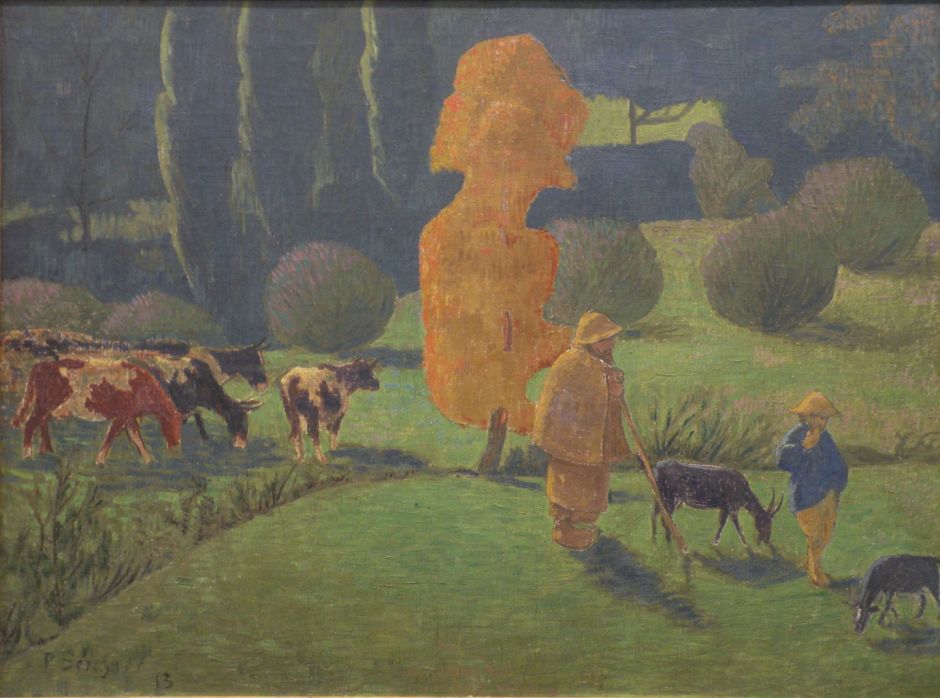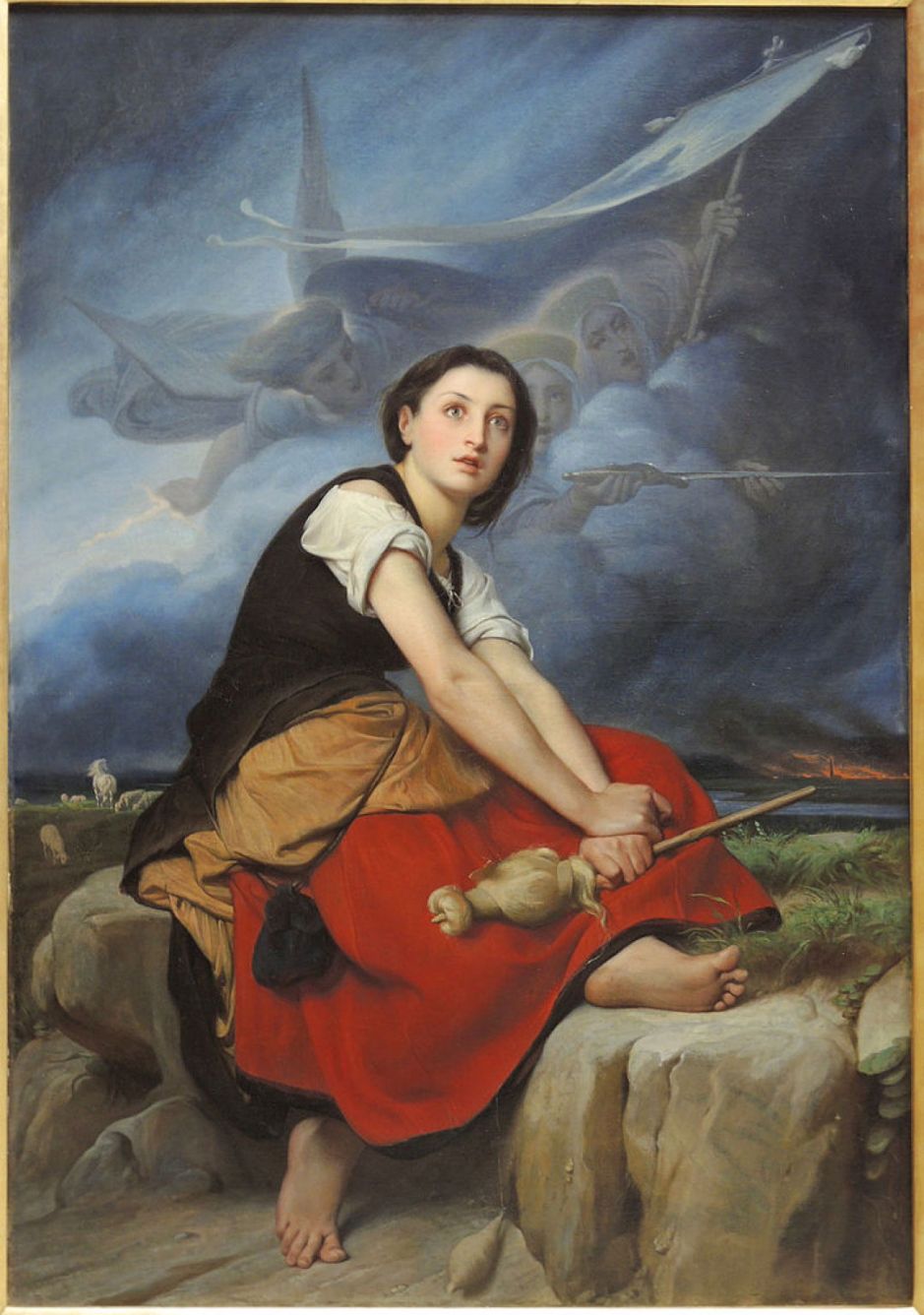However pastoral the landscape looks, life for the shepherd (and shepherdess) is seldom as peaceful as it’s made out to be. This weekend’s two articles look at the depiction of shepherds and shepherdesses in paintings. I start with their role in stories.
Ever since the domestication of the sheep well over ten millenia ago, people have been caring for flocks, moving them between grazing, helping care for and protect young lambs, and selecting those to go for meat. With sheep often inhabiting more rugged and remote terrain, the shepherd’s life is often isolated and challenging.
Shepherds feature in ancient myth and legend in many different roles. Two of the more unusual are those of the young Aesculapius, and the love of the goddess Diana for Endymion.

Richard Dadd’s unusual watercolour of The Infant Aesculapius Discovered by Shepherds on a Mountain (1851) shows a rare motif in visual art: the god of medicine Aesculapius as an infant being raised by a goat, with the help of a couple of shepherds. Dadd omits a snake which was an essential part of the story, as it accounts for the serpent which winds it way around the Aesculapian staff.

Endymion was an Aeolian shepherd according to classical Greek myth. Although accounts differ, there are threads which run that Selene, the Titan goddess of the moon (in Roman terminology, Diana), fell in love with Endymion, when she found him asleep one day. Selene/Diana asked Zeus to grant him eternal youth, which resulted in him remaining in eternal sleep. In spite of his somnolence, Selene/Diana still managed to have fifty daughters by him.
In this beautiful pastoral watercolour by Walter Crane, Endymion is seen, fast asleep, in a meadow. Diana is in her other role, as hunter, with her dogs, bow and arrows. Endymion’s flock of sheep is in the distance.

Corydon, whose name probably derives from the Greek name for the lark (bird), became a stock name for shepherds in classical literature. The most prominent of several Corydons is a shepherd in Virgil’s bucolic poems the Eclogues, written around 40 BCE, who falls in love with a boy named Alexis, as shown in the right of Paul Sérusier’s painting of The Corydon Shepherd from 1913.
Shepherds have several important roles in Judaeo-Christian religious writings too, appearing in both the Old and New Testaments.

Their first appearance is in the story of the brothers Abel and Cain in the Old Testament book of Genesis. They were the first two sons of Adam and Eve, and when young adults came into conflict. Cain was the older, and became a ’tiller of the soil’, while his younger brother Abel was a shepherd. Cain became jealous of Abel, whose offerings to the Lord were better received than Cain’s. So Cain took Abel out into one of his fields, where he killed him and buried his body.
Hans Andersen Brendekilde’s Cain gets on with his Work in the Field after Killing his Brother Abel, from 1896, shows Abel’s flock in the distance, with an eagle flying over them, and the shepherd’s dog pining for his master at the left. Abel’s lifeless face still looks up from his grave, as Cain stares down at him.
Christian teaching and literature is particularly rich with references to shepherds, particularly in metaphor and parable. These start with the birth of Christ, and continue throughout his ministry.

In the account of the nativity of Christ in the Gospel of Luke, chapter 2, verses 8-15, an angel appeared to the shepherds around Bethlehem and announced the nearby birth, as shown in Jules Bastien-Lepage’s The Annunciation to the Shepherds of 1875.
This might serve as the artist’s painted manifesto, showing how he built on tradition rather than discarded it. It strikes compromise between the gilding and Renaissance appearance of the angel, the rural realism of the shepherds who have come from Millet (see the next article) rather than Bethlehem, and the wonderfully controlled looseness and gesture of the darkened landscape. He wastes not a brushstroke in telling its simple story, in the almost averted facial expressions, the arms frozen in surprise, hands which have just been tending sheep, even their bare and filthy feet.

Henry Ossawa Tanner’s Angels Appearing before the Shepherds from about 1910 adopts a more radical approach in his mixture of loose brushstrokes, rubbings, and scumbled passages close to Symbolism. Its colours are closely limited, with a single small patch of orange at the lower right, indicating a small open fire, amid an abundance of blues and a few greens. The angels at the left are so ethereal that they could at any moment dissipate like a puff of smoke, and the three shepherds are almost insignificant by comparison.

After the annunciation to them, the shepherds go to pay homage to the infant Christ in adoration, as shown in Jacopo Tintoretto’s The Adoration of the Shepherds from about 1578-81. This starts his magnificent series depicting the life of Christ in the Sala superiore of the Scuola Grande di San Rocco in Venice.
Tintoretto takes the conventional (even a little hackneyed) scene of the nativity and adds a second story. Within this, his references stay with tradition: downstairs is an ox and an ass, a cockerel, even a peacock. The Holy family are naturally upstairs, where the infant Christ really does look like a tiny, newborn infant. At the very top, peering through the tumbledown roof, are angels. There are visual links to the crucifixion in the ladder at the foot and cruciforms in beams of the roof.

One of Charles Le Brun’s last paintings is another remarkable depiction of The Adoration of the Shepherds from 1689, the year before his death. Here he achieves a marvellous luminosity not seen in his earlier work.

Murillo’s The Good Shepherd from about 1660 refers to a metaphor used pervasively in Christian teaching, that of Christ as the good shepherd of his flock of Christians. Unusually, though, the artist depicts Jesus not as an adult but a child, holding the crook of a shepherd in one hand, his other hand stroking the back of a sheep, with the rest of the flock in the distance. The crook transfers symbolically to the bishop’s crosier.

Pieter Brueghel the Younger’s The Good Shepherd from 1616 is even more worldly. A contemporarily-dressed shepherd is being attacked by a wolf, as he tries to save his flock, which are running in panic into the nearby wood.

It’s more unusual to see the Virgin Mary as a shepherdess, but this was a theme which Miguel Cabrera painted in several of his works, including this delightful Divine Shepherdess painted in oil on copper in about 1760. A rather amusing twist is the head of a monster at the extreme right, apparently scaring one of the sheep. There is a knight flying down to slay it using a fiery sword.
The best-known saintly shepherdess, at least in France, is Joan of Arc, who is depicted in several paintings seeing her calling vision when tending a flock of sheep.

Léon-François Bénouville’s Joan of Arc Hearing Voices, probably painted between 1845 and his early death in 1859, shows her wide-eyed surprise on being called in that mystical experience. This shows her accompanying visions in the sky: Saints Margaret, Catherine, and Michael are here worked into the cumulus forms heaped up over a town ablaze in the distance, itself a visual link to the wars between the English and French, and perhaps to Joan’s own later martyrdom. Instead of her crook, Joan holds a distaff for spinning wool, linking her to a product of the sheep in the flock behind her.

Shepherds also play important supporting roles in epic poetry, such as Torquato Tasso’s Jerusalem Delivered. Eugène Delacroix’s wonderful painting of Erminia and the Shepherds from 1859 shows an episode in which the ‘pagan’ heroine Erminia, dressed as the warrior Clorinda, becomes lost, and chances on a family of shepherds tending their flock. The family are taken aback, and their dog has rushed out to bark at the intruder.

Henry Fuseli’s The Shepherd’s Dream from 1793 tells a story of fairy elves bewitching a peasant, from John Milton’s epic Paradise Lost (1667), to which Fuseli had been introduced when a student. This shows a scene in the poem when the fallen angels in the Hall of Pandemonium (in Hell) are compared to the fairies who bewitch a peasant with their music and dancing:
… fairy elves,
Whose midnight revels by a forest side
Or fountain some belated peasant sees,
Or dreams he sees, while over head the moon
Sits arbitress, and nearer to the earth
Wheels her pale course, they on their mirth and dance
Intent, with jocund music charm his ear;
At once with joy and fear his heart rebounds.
Fuseli transforms the convention of these fairies dancing on the ground, and instead they swirl through the air above the sleeping shepherd. One of the fairies is touching the shepherd with his wand, to maintain his sleep. At the lower left, a fairy has pulled a mandrake root, which has transformed into a tiny homunculus, which is now standing. At the far right, sat on the steps, is the small figure of Queen Mabs (or Mab), who is responsible for bringing nightmares.
Tomorrow I will leave narratives behind, and concentrate on shepherds in the landscape, and as subjects in their own right.

